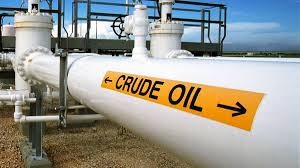This question pretty much explains everything about the global financial system. Numerous textbooks have been written on this topic. Gold price, Stock market, US Dollar and Oil Prices are all similarly characterized and they are significantly interrelated with each other and with the business cycle.
Gold: It is considered the most important of all stocks even today; its store value keeps increasing. It is the most important components of the global economy since 1945. Most often gold’s value remains fairly constant and increases over time. It is therefore used as an ideal hedge against (boundary) inflation. Many investors have never seriously considered gold to be a long-term investment, but the topic of investing in gold did come to the forefront of during the 2008–2009 recessions. People invest in gold because despite high inflation, its value does not depreciate. Gold is also a safe asset. Remember this point always, that increasing gold prices are a traditional indicator of a recession or a downturn in an economy. People are very scared when it comes to the pricing of gold; they get worried that if price of gold falls, they might lose because the value of other investments may also go down in the future. Indians traditionally hold the yellow metal in very high esteem; they hoard lot of gold for the same reason. And, why not, gold saving has helped people to get their children married, their education, clearing healthcare bills etc.
US Dollar: The strongest currency in the world is this currency. The virtual strength of the U.S. economy supports the value of its currency. It is the reason the dollar is the most powerful currency. Around $580 billion in U.S. bills (bank notes) are used outside the country. That’s 65 percent of all dollars. That includes 75 percent of $100 bills, 55 percent of $50 bills, and 60 percent of $20 bills. Most of these bills are in the former Soviet Union countries and in Latin America. They are often used as hard currency in day-to-day transactions. More than one-third of the world’s GROSS DOMESTIC PRODUCT (GDP) comes from countries that peg (bringing up to scale) their currencies to the dollar. That includes countries that have adopted the U.S. dollar as their own; they are Ecuador, East Timor, El Salvador, Marshall Islands, Micronesia, Palau, Turks and Caicos, British Virgin Islands, Zimbabwe. Another 89 keep their currency in a tight trading range relative to the dollar. In the foreign exchange market the dollar rules. Ninety percent of forex trading involves the U.S. dollar. The dollar is just one of the world’s 185 currencies according to the International Standards Organization List. But most of these currencies are only used inside their own countries. Theoretically, any one of them could replace the dollar as the world’s currency. But they won’t because they aren’t as widely traded. The chart below shows the 10 most traded currencies in 2018.
- US dollar (USD)
- Euro (EUR)
- Japanese yen (JPY)
- Pound sterling (GBP)
- Australian dollar (AUD)
- Canadian dollar (CAD)
- Swiss franc (CHF)
- Chinese renminbi (CNH)
- Swedish krona (SEK)
- New Zealand dollar (NZD)
Most of the trade in oil is invoiced in US Dollar. Whenever India buys oil from Iran, natural gas from Russia and electronics from China, we do not pay them in Rial, Rouble or Yuan, we pay them in Dollars. Similarly, when India sells leather to Australia, they pay us in Dollars. Dollar Rupee exchange rate is thus very important for both imports and export health of a country. If it goes high, consumers suffer, it goes low exporters suffer.
Oil Prices: Oil prices are higher because of high demand and low supply; it depends upon OPEC (Organization of the Petroleum Exporting Countries) quotas, or a drop in the dollar’s value. India is a heavy importer of oil and it is the most important energy resource. An increase in the global oil prices hurts the Rupee and the Indian economy. Demand for oil and gas follow a predictable seasonal swing. Demand rises in the spring and summer due to increased driving for summer vacations. Demand drops in the autumn and winter. Low supply occurs when war or natural disaster curtail exports from oil-producing countries. Traders often bid up prices when they hear of impending disasters or the threat of war. Oil prices decline once production resumes. When commodities future traders anticipate increased demand, they usually start bidding oil prices higher in January or February. Around 70 percent of gas prices are based on oil prices. U.S plays a major role in fixing oil prices.
Stocks (Share market): Though it is called stock market or equity market and is primarily known for trading shares/equities, other financial securities – like exchange traded funds (ETF), corporate bonds and derivatives based on stocks, commodities, currencies and bonds which are also traded on the stock markets. When the economy is doing well or is expected to do well, the share prices of stocks in that country rise, and when the economy is doing badly, their value drops. India’s individual stock ownership rate is quite low; this adds an extra layer of risk to the Indian stock markets that are affected by global shocks. An important aspect to note is that stock markets are determined by the other three factors noted above: gold, dollar and oil prices. India is an odd economy. It’s highly included with the global economy but does not have enough leverage to affect it in any way. It is hence vulnerable to external shocks a lot, things that the government cannot control.
Connection between Gold, Oil Prices, Dollar and Stock Market: Now coming to the original question, what is the relationship between these four assets? They react to each other in a variety of ways. If the future expectations of the global economy are bad, people run to the safety of the US Dollar and Gold and sell stocks. The price of gold rises, the value of dollar rises against the Rupee. FII’s (foreign institutional investors) and FDI’s pull money out of the Indian stock market causing it to decline. When the price of dollar rises, oil prices increase for India. This puts strain on the economy as inflation increases. Because of high inflation people invest more in gold and less in stocks causing the stock markets to fall. When the price of oil decreases, energy costs reduce. This will reduce the costs of energy, we will spend less Dollars buying oil and the Rupee strengthens. When the price of dollar goes down, price of oil goes down reducing energy company shares costs.
There are many other permutations and combinations to note. Gold and oil are positively related. A rise in oil prices is an indication of bad times and gold prices rise correspondingly. Gold and stocks are negatively correlated. If stocks go up, gold goes down and vice versa. These effects are collective. If we break down the stock market into individual stocks, they react differently to change in oil and gold prices. An increase in oil prices causes the energy stocks to rise because of higher expected profits, an increase in gold prices will cause Gold ETF’s and banking stocks to rise but other stocks might fall or remain stable. An increase in the value of the dollar causes IT stocks to rise because their revenue comes in Dollars but cause energy stocks to fall.
It is of no use to study the price of these assets in isolation as they heavily depend on the prevailing macroeconomic conditions. For example, when the business cycle is positive i.e. the GDP is rising, stocks rise, but, gold falls. If inflation is rising along with GDP, then both gold and stocks rise, stocks rise on FDI infusion and gold rises because of inflation. Add an external change in oil and this relationship becomes even complex. Add U.S Dollar and we have got ourselves in a commotion. In conclusion, no one can say for certainty how one or the other price might react to a change in the other. Modern financial markets function on volatile conditions. Because of this very uncertainty, they trade based on expectations of how prices might react.

















































